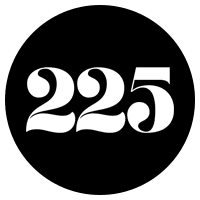Where art thou?
When plans for what would become the Shaw Center for the Arts were first announced, some downtown-minded artists in the city hoped the new building would offer artist studios for lease. That didn’t happen, but with the evolution of the Arts and Entertainment District, affordable downtown space for at least a few working artists could be possible.
“Part of the economic incentive package is going to address ‘How do you attract more artists?’” says Davis Rhorer of the Downtown Development District. “We’ve even talked about housing artists-in-residence downtown. We’re going to explore this thing as in-depth as we can because that just makes it a more interesting place.”
Rhorer is pushing for legislation that would make downtown a Cultural Products District, meaning buyers get a rebate on state sales taxes for purchasing artwork in the district. A vacant 2,000 square feet of storefront space in the parking garage on Third Street at Convention could be used for studios, he says.
|
|
The trick, however, is getting stand-alone art galleries and studios to open downtown, a tough challenge considering the district’s high real estate costs.
Culture Candy Executive Director Erin Rolfs doesn’t see the Third Street-centered Arts and Entertainment District hosting many artist studios in the future, but suggests the Mid City warehouse district, which now plays home to the Ephemeral Gallery, as a better location for subsidized space.
“You have to simulate an art-conscious economy in order to start to generate a genuine one,” Rolfs says. “I would propose that (subsidies) be on a temporary basis, though, a stepping stone, not a permanent crutch.”
In 1980 a group of like-minded culture warriors in Raleigh, N.C., decided to help revitalize their downtown and foster public appreciation and participation in the arts at the same time. Six years later Artspace was born as a nonprofit and a 30,000-square-foot creative enclave in the heart of Raleigh’s downtown Moore Square district.
Carved out of a turn-of-the-century building that had been everything from the city’s livery to a car dealership, Artspace houses 28 subsidized artist studios (some pay as little as $200 a month), and three separate exhibition spaces, one each for professional level artists, emerging artists and members of the local art association. Select regional artists are chosen to receive Artspace residencies—free rent in exchange for teaching classes and letting the public view their works in progress.
At the time, Moore Square was a sleepy, blighted area of old Raleigh. Artspace became a cornerstone of downtown redevelopment in the 1990s. Restaurants, coffee shops and other goods and services cropped up near Artspace to cater to the large numbers of artists and patrons coming.
June Guralnick, director of the Raleigh Arts Commission, says one key is public accessibility to the arts and the creative process. Artspace is always open to the public, and the group now sponsors a monthly First Friday Gallery Walk with more than three dozen participating studios, galleries, shops and restaurants, which display art in downtown Raleigh. Nearly 2,000 attend these walks, and most stay downtown for dinner, says Mary Poole, executive director of Artspace. “It’s been an economic boom for downtown,” she says.
Artspace has been a sustainable and effective effort for 22 years because of its singular focus and financial formula. The nonprofit receives 20% of its annual budget from corporate and individual donors, 30% from grants and foundations and 50% from renting space for private functions and fundraisers. The organization purchased its Artspace building from the city in 2005.
With Artspace providing affordable studios and a large contingent of Raleigh’s creative class living in the Glenwood South District next to the Moore Park District, hundreds of artists and 20-somethings cut across the length of downtown Raleigh on a daily basis.
“In order to have a lively downtown you have to have cultural arts, and you have to have the artists there,” Poole says. “They play such a significant role. If you want people to live downtown they are going to have to have something to do downtown.”
|
|
|

